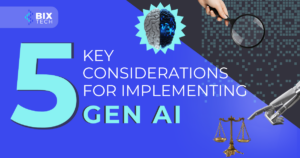Cloud Data Management in 2025: Strategies, Best Practices, and Real-World Insights

Sales Development Representative and excited about connecting people
Introduction: Why Data Management in the Cloud Matters More Than Ever
In today’s data-driven business landscape, managing information effectively is not just a technical issue—it's a strategic necessity. Without robust data management, organizations risk falling behind competitors, losing touch with customer needs, and making decisions based on incomplete or outdated information. As we approach 2025, the way companies handle data is undergoing a dramatic transformation, with cloud platforms taking center stage.
Recent research underscores the urgency: a majority of business leaders find it challenging to interpret their data, forecast data-related costs, and fill talent gaps in their data teams. Meanwhile, the global data market is projected to reach a staggering $77.6 billion by 2025, highlighting the growing significance of data management solutions.
However, despite the growing investment in data technology, many organizations still underutilize their data assets. For instance, a Harvard Business Review study found that less than half of structured data is actively used for decision-making, and a mere 1% of unstructured data ever gets analyzed.
Actionable Takeaway
- Evaluate your current data usage: Regularly audit how much of your company’s structured and unstructured data is actively supporting business decisions. Identify gaps and set goals for improvement.
The Shift to Cloud: A Strategic Imperative
As data volumes soar and business demands evolve, many organizations are moving away from traditional, in-house data centers in favor of cloud data management platforms. This transition is more than a technological upgrade; it's a foundational shift that affects cost, security, and scalability.
Case Study: Cloud Migration Drives Business Growth
Consider the case of a leading insurance company with millions of clients. After years of relying on a legacy quoting application burdened by technical debt, the company decided to migrate to a cloud-native environment using AWS and Kubernetes. This move modernized their infrastructure, improved code quality, and enabled effortless scaling to support their expanding database—all while reducing operational costs.
Such stories are increasingly common as businesses recognize the transformative potential of cloud data management.
- For more on how cloud solutions are revolutionizing industries, check out this guide on cloud solutions for manufacturing.
Actionable Takeaway
- Assess your readiness for cloud migration: Map out your data landscape and evaluate the benefits of moving to the cloud versus maintaining on-premises infrastructure.
Key Advantages of Cloud Data Management
If you’re considering the switch to cloud-based data management, here are the top benefits your organization can expect:
1. Enhanced Security and Data Protection
Cloud providers invest heavily in security, often exceeding what in-house teams can offer. From advanced encryption to proactive monitoring, your data enjoys multiple layers of protection. Automated backup and disaster recovery features further reduce the risk of data loss.
Example
A retail firm migrated customer data to the cloud and, within months, reported a 30% decrease in security breaches thanks to robust cloud monitoring tools.
Actionable Takeaway:
- Leverage built-in cloud security features: Enable multi-factor authentication, automated backups, and regular security audits.
2. Effortless Scalability
Unlike traditional data centers that require expensive hardware upgrades, cloud platforms scale resources up or down automatically based on demand. This flexibility optimizes costs—you only pay for what you use.
Practical Scenario
An e-commerce business experienced a sudden surge in traffic during a holiday sale. The cloud platform scaled resources instantly, ensuring zero downtime and a seamless customer experience.
Actionable Takeaway:
- Monitor usage patterns: Use cloud analytics to anticipate peak periods and adjust resources proactively.
3. Global Accessibility and Collaboration
Cloud data management breaks down geographical barriers, allowing teams worldwide to access and collaborate on data securely. Role-based access controls ensure only authorized users can view or modify sensitive information.
Example
A multinational consulting firm uses cloud-based analytics platforms to synchronize project data across continents, speeding up decision-making and project delivery.
Actionable Takeaway:
- Implement strict access controls: Regularly update user permissions and audit access logs for compliance.
4. Reliable Backups and Disaster Recovery
Cloud platforms automate data backups, ensuring your business can recover quickly from unexpected disruptions. Some providers also offer the option to download backups locally for added peace of mind.
Actionable Takeaway:
- Test your disaster recovery plan: Schedule regular drills to confirm your backups are functional and accessible.
5. Cleaner, More Reliable Data
Cloud solutions often centralize data storage, providing a “single source of truth.” Automated data validation keeps datasets clean and up-to-date, empowering advanced analytics and AI initiatives.
- Discover how data science is transforming modern business operations.
Actionable Takeaway:
- Integrate data validation tools: Use cloud-native ETL processes to maintain data quality.
6. Lower Carbon Footprint
Many cloud providers prioritize sustainability, leveraging energy-efficient data centers and renewable energy sources. Migrating to the cloud can align your organization with environmental goals and regulatory requirements.
Actionable Takeaway:
- Choose green cloud providers: Factor in sustainability certifications when selecting a cloud partner.
Potential Drawbacks of Cloud Data Management
No solution is without its challenges. Here are the main considerations before moving your data to the cloud:
1. Third-Party Data Stewardship
Entrusting your data to a cloud provider means accepting that external administrators could theoretically access sensitive information. While reputable providers enforce strict privacy protocols, this is a valid concern for highly regulated industries.
Actionable Takeaway:
- Understand your provider’s privacy policies: Ensure contracts include clear data ownership and privacy clauses.
2. Cybersecurity Threats
Cloud data centers are prime targets for cyber attacks due to the vast amounts of data they handle. Although providers invest in strong defenses, the risk of breaches persists.
Actionable Takeaway:
- Adopt a shared responsibility model: Combine provider security tools with your own cybersecurity best practices.
3. Vendor Lock-In
Switching cloud providers or integrating custom applications can be challenging due to proprietary tools and APIs. This lock-in might limit flexibility and innovation.
Actionable Takeaway:
- Favor open standards and interoperability: Choose providers that offer robust APIs and support for common development frameworks.
Best Practices for Successful Cloud Data Management
To maximize the benefits of cloud data management and sidestep common pitfalls, follow these best practices:
1. Develop a Clear Migration Roadmap
Start with a comprehensive plan that outlines timelines, key milestones, and resource allocation. Involve stakeholders from IT, compliance, and business units to ensure alignment.
Actionable Takeaway:
- Create a phased migration plan: Prioritize non-critical workloads for initial migration to minimize disruptions.
2. Invest in Training and Change Management
Equip your team with the skills needed to manage cloud environments. Training reduces resistance and speeds up adoption.
Actionable Takeaway:
- Schedule ongoing cloud training: Offer workshops and certifications for IT and business users alike.
3. Monitor Performance and Optimize Costs
Continuously track cloud usage and performance metrics. Identify opportunities for cost savings and performance improvements using cloud-native analytics tools.
Actionable Takeaway:
- Set up automated alerts: Monitor spending and resource utilization to prevent budget overruns.
4. Prioritize Data Governance
Establish clear policies for data privacy, compliance, and lifecycle management. Assign roles and responsibilities for data stewardship.
Actionable Takeaway:
- Implement a data governance framework: Regularly review policies to adapt to evolving regulations and business needs.
Conclusion: Position Your Organization for Cloud Success in 2025
Cloud data management is no longer a luxury—it's a strategic imperative for any organization aiming to thrive in 2025 and beyond. By understanding the benefits, addressing the challenges, and following proven best practices, you can unlock more value from your data assets and build a future-ready business.
Looking for more actionable insights? Explore our resource on cloud-driven manufacturing transformation or discover how data science is fueling business revolutions.
Ready to take the next step? Evaluate your current data strategy, build your migration plan, and empower your teams to harness the power of cloud data management for a smarter, more agile future.









